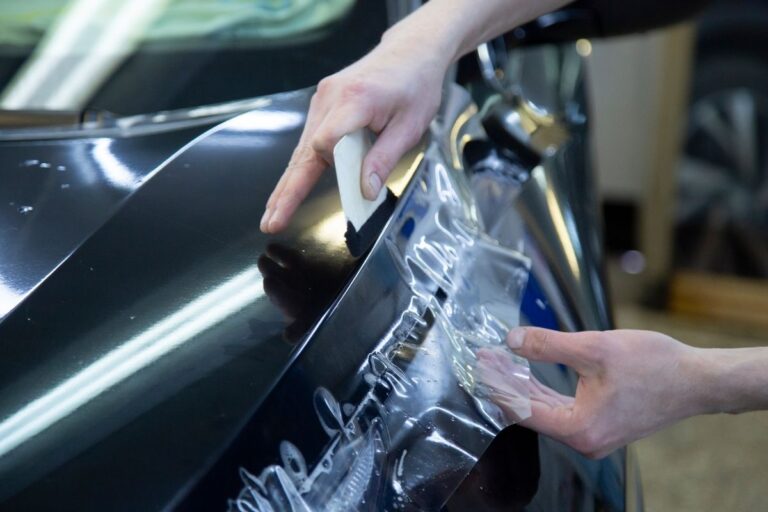
Private jet maintenance costs are increasingly becoming a burden to owners, one reason for which is that they’re on the rise. Combined with unexpected aircraft repairs and staffing shortages, all these aircraft management challenges are influencing jet ownership decisions.
As a potential private jet owner, you need to know that owning a jet can already set you back anywhere from $2 million to $100 million, per financial consultancy firm Fathom Thinking. Once you own it, you’ll spend hundreds of thousands more on operating and maintaining it, something that could go up to millions for luxury jet expenses.
By understanding all these expenses, you can take proactive steps and make more informed, practical decisions regarding jet ownership.
How Much Does It Cost to Maintain a Private Jet?
Ongoing private jet ownership costs sum up to around $500,000 to $1 million per year, according to Investopedia. Such expenses include:
- Routine maintenance
- Crew salaries
- Unexpected repairs
- Necessary insurance
- Hangar rental
If you’re a sole jet owner, you’ll have to shoulder all those expenditures yourself.
What Is the Maintenance of a Private Jet?
As a private jet owner, you must adhere to several types of checks to maintain your aircraft and ensure it remains safe and airworthy. By adhering to a rigorous maintenance program, you can rest easy and enjoy every flight, knowing that you’ve thoroughly vetted your jet for any potential problems before it takes off.
Routine Line Checks
Also called maintenance pre-flight, service check, overnight check, and post-flight check, a routine line check is the most basic type of aircraft maintenance and requires minimal tools. During one, aviation maintenance technicians will inspect components like:
A Checks
“A checks” are more rigorous than routine line checks, typically performed every 400 to 600 flight hours or 200 to 300 flights. In most cases, aviation technicians conduct these at hangars and require at least 10 working hours. Some of the tasks involved include:
- Inspecting the interior and aircraft hull
- Looking for signs of corrosion, damage, deformation, or missing parts
- Service checks
- Engine checks
- Function checks
- Ensuring emergency lights are working
- Checking parking brakes
- Lubricating the nose gear retract actuator
B Checks
Most airlines and operators no longer implement “B checks,” as many of the tasks involved are now either in A checks or the heavier, more stringent C checks. Some companies and private jet owners still perform it, though, usually as part of a more comprehensive maintenance program.
Some of the typical tasks performed during B checks include:
- Alignment checks and torque work on the nose landing gear spotlight
- Inspections of the wheel well hydraulic tubing
- Checking for corrosion and fluid leakages
C Checks
C checks involve deep inspections of most of an aircraft’s components. Examples include:
- Examining load-bearing components for corrosion and damage
- Inspecting structures for optimal functioning
- Ensuring the correct operation of the DC bus tie control unit (for larger jets)
- Lubricating all cables and fittings
Since C maintenance checks are extensive, they can take a jet out of service for a week or two.
D Checks
D checks are the heaviest aircraft maintenance task, usually performed just once every six to ten years, depending on the vessel. They’re the most rigorous and comprehensive, generally involving the disassembly of an aircraft.
When your private jet undergoes a D check, maintenance professionals will inspect it in its entirety. You can expect this type of servicing to take around four to six weeks.
How Are Rising Private Jet Maintenance Costs Changing and Influencing Ownership Choices?
Given the immense cost associated with private jet maintenance, many owners have been changing course and opting for more cost-effective, practical alternatives like fractional private jet ownership by Jettly.
With fractional ownership, several individuals pool their resources to co-own and get access to shared private jets. They pay a portion of the costs and share flight times with their “co-owners.”
Since fractional ownership means dividing the costs of owning, operating, and maintaining private jets, it creates a more budget-friendly option for jet owners. It minimizes the financial risks involved with sole jet ownership while providing guaranteed aircraft availability whenever co-owners need a ride.
Frequently Asked Questions
Where Can Fractional Jet Owners Fly to?
Fractional jet owners can usually fly anywhere that their program provider flies to. Companies that offer fractional jet ownership programs typically have access to thousands of registered aircraft worldwide, with stations in the contiguous United States to Canada, Mexico, and even the Caribbean.
As someone considering fractional jet ownership, you should choose a provider that caters to the locations you frequent and the places you wish to visit. Ensure they have registered jets in these areas so you can fly to them in private whenever you need or want to.
Do Fractional Jet Owners Have Unlimited Access to Jets?
Not always. Remember: fractional jet ownership involves multiple owners who have to divvy up the flight hours. The membership program’s terms and conditions should indicate this, but in most cases, they provide a minimum of 25 hours of aircraft access, with other plans offering 50 and 100 hours.
If you’re such a frequent flyer that you’re in the air for over 100 hours a year, consider getting an ownership plan that provides unlimited global aircraft access. With this, you don’t have to worry about exceeding any limitations or not having a ride for a last-minute or impromptu holiday.
What Are Other Alternatives to Private Jet Ownership?
Aside from fractional jet ownership, you may also want to consider a jet card.
Jet cards are private aviation membership programs that allow you to pre-purchase flight hours at fixed rates with no ownership commitments. They also offer guaranteed access to aircraft, although they’re typically better for “less frequent” flyers, as they often provide fewer guaranteed flight hours.
Elevate Travels With Better-Value Jet Ownership Programs
With private jet maintenance costs ranging from half a million to over a million, it may be time for current and potential owners like you to reconsider opting for fractional ownership or jet card programs. With these alternatives, you can continue enjoying the perks of private flights without the same expenses and burdens of sole ownership.
For more informative guides on lifestyle, travel, and aviation industry trends, check out our other recent posts!
This article was prepared by an independent contributor and helps us continue to deliver quality news and information.
link






